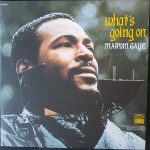
From the band’s website
Admittedly, being inducted into the Protest Music Hall of Fame, which is not an actual hall of fame but more of an online archival project for this little-known website, doesn’t mean as much as being inducted into the Rock & Roll Hall of Fame (even though 3/4 of Rage Against The Machine didn’t show up for their induction). But you can’t deny RATM’s role in the history of protest music, and you will be hard-pressed to find a rock band more political, especially one that has achieved commercial success.
During their acceptance letter to the Rock Hall, they described themselves as “A band who is as well known for our albums as we are for our fierce opposition to the US war machine, white supremacy and exploitation. A band whose songs drove alternative radio to new heights while right wing media companies tried to purge every song we ever wrote from the airwaves A band who shut down the NY Stock Exchange for the first time in its history A band who was targeted by police organizations who attempted to ban us from sold out arenas for raising our voices to free Mumia Abu Jamal, Leonard Peltier and other political prisoners. A band who sued the US State Department for their fascist practice of using our music to torture innocent men in Guantanamo Bay. A band who wrote rebel songs in an abandoned, industrial warehouse in the valley that would later dethrone Simon Cowell’s X Factor pop monopoly to occupy the number 1 spot on the UK charts and have the most downloaded song in UK history. A band who funded and organized delegations to stand with Mexican rebel Zapatista communities to expose the Mexican government’s war on indigenous people. A band whose experimentation in fusing punk, rock and hip hop became a genre of its own.”
Rage released their self-titled debut on November 3rd, 1992, which also happened to be the day of the US Presidential election. The album cover featured Thích Quảng Đức, a Vietnamese Buddhist monk, burning himself as an act of protest. The music on the album was just as radical and explicitly political as the cover. Every track on the album addressed social issues, including the classic protest anthem “Killing In The Name ,” which protested racism and police brutality, and “Freedom,” which called for the freeing of imprisoned Native American leader Leonard Peltier. The music video for “Freedom,” in particular, was educational for a younger generation that may not have been aware of the issue.
They released their sophomore album Evil Empire in 1996, which continued to rage the righteous battle. “Bulls On Parade” is a scathing indictment of the US Military Industrial Complex, while “People of the Sun” features an informative video about the Zapatista revolution in Mexico.
In 1999 they released their third studio album of potent protest tunes The Battle of Los Angeles. The video to the album’s biggest hit “Guerrilla Radio” deals with the exploitation of garment workers. It is another example of how the band effectively uses the music video medium as a means of provoking thought (and hopefully action). They followed that up with their final studio album Renegades in 2000, a cover album which included their poignant rendition of Bruce Springsteen’s “The Ghost of Tom Joad”
Since that time they have reunited for multiple reunion tours, often donating proceeds from shows to various causes. Their music continues to resonate and is more needed than ever.

